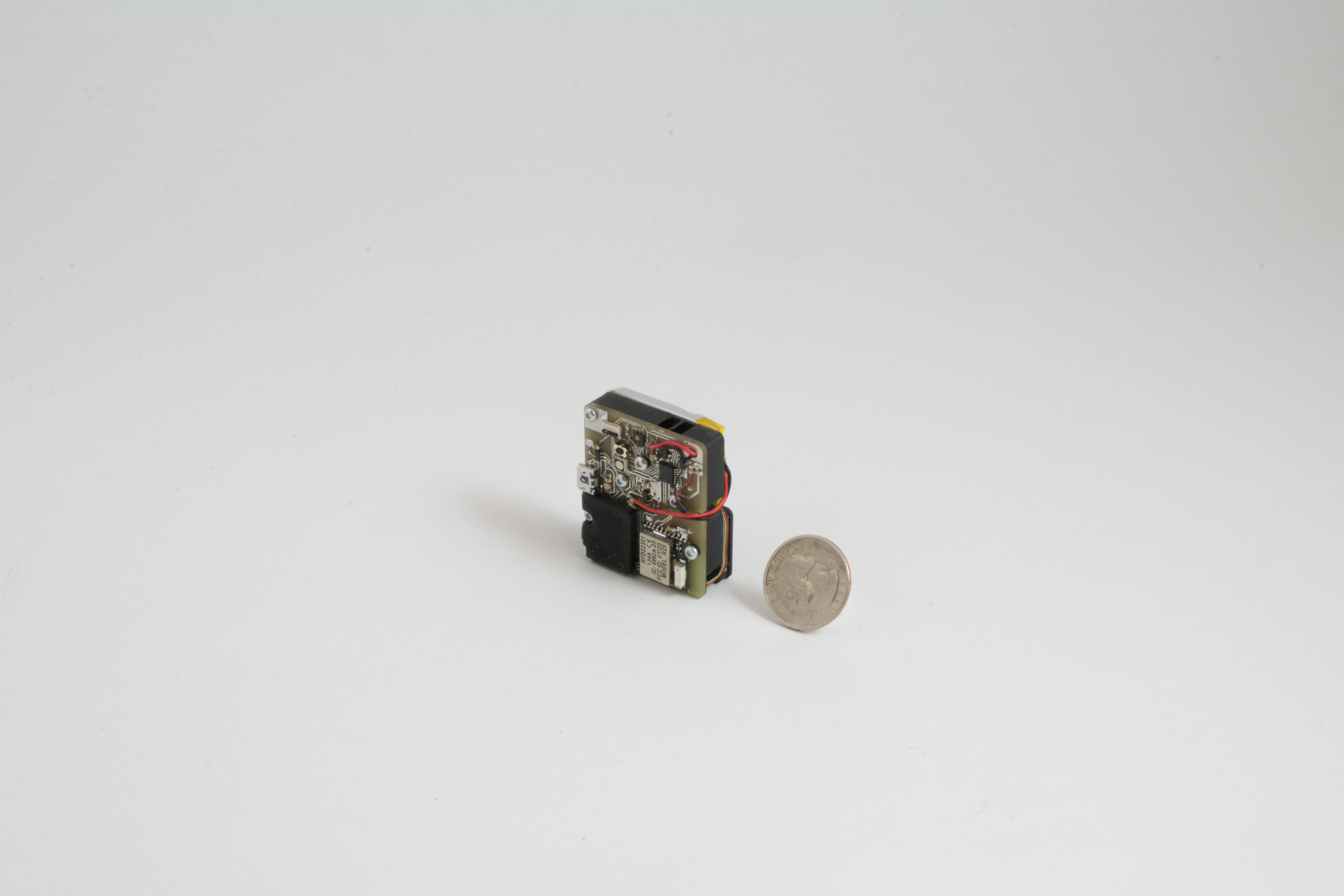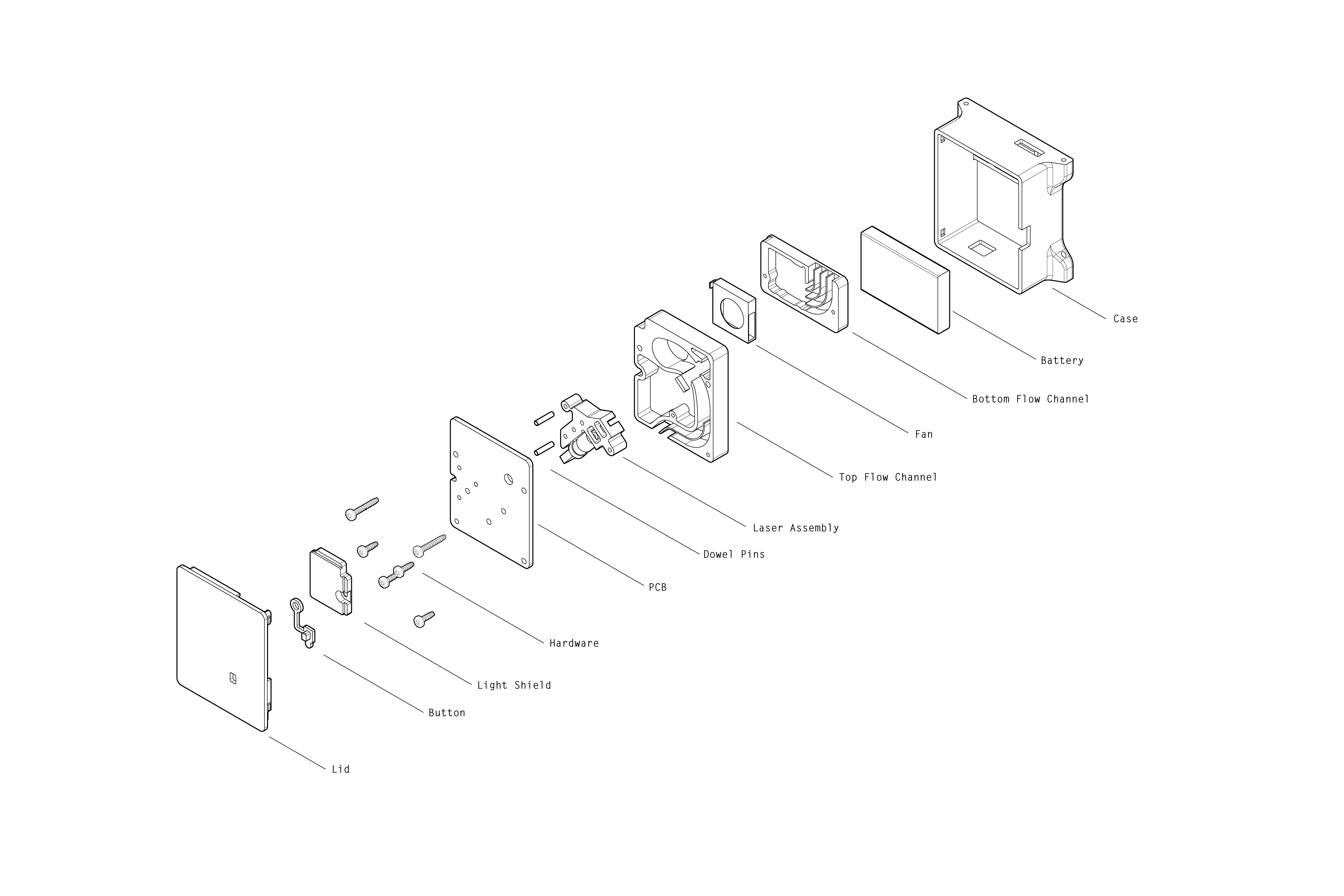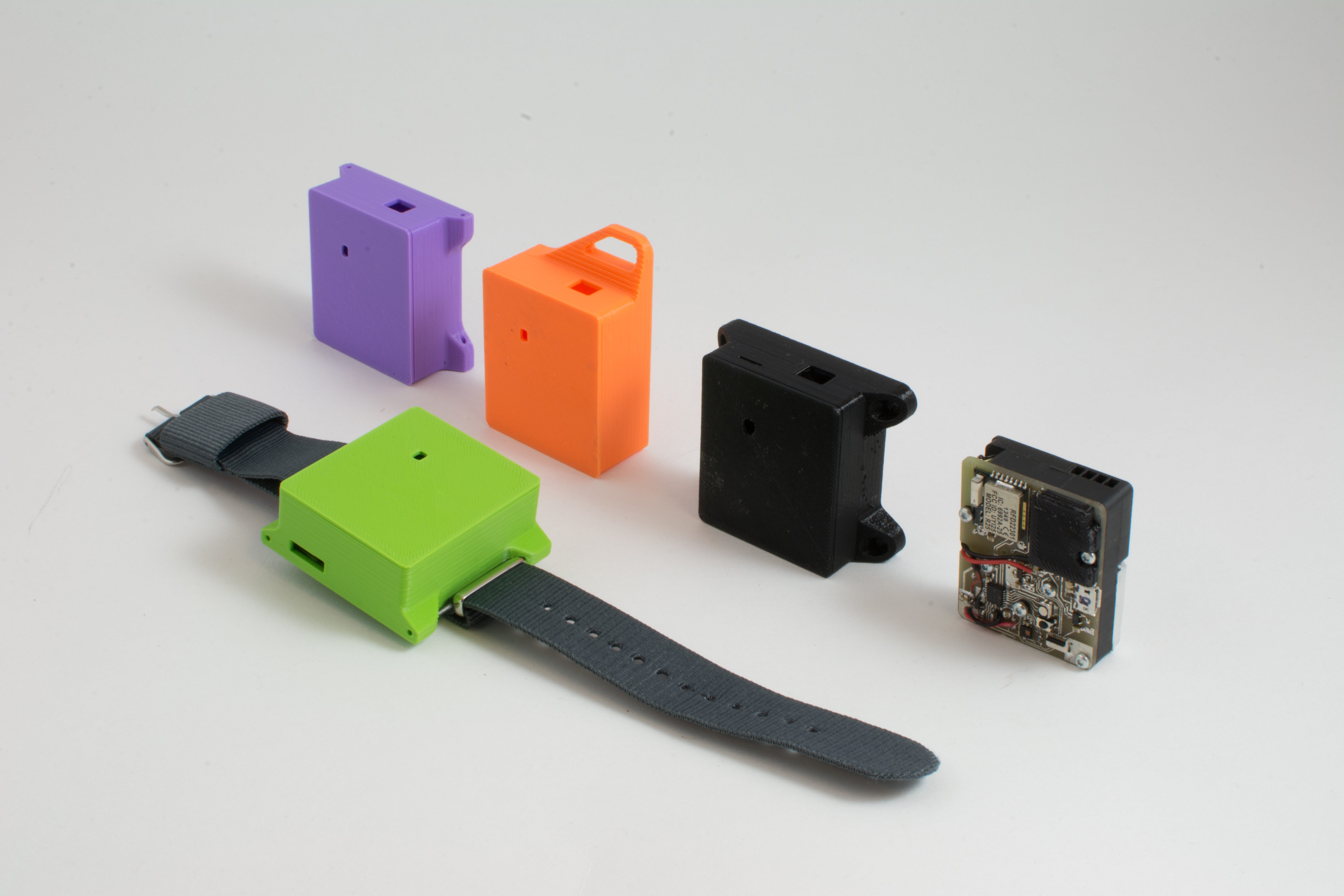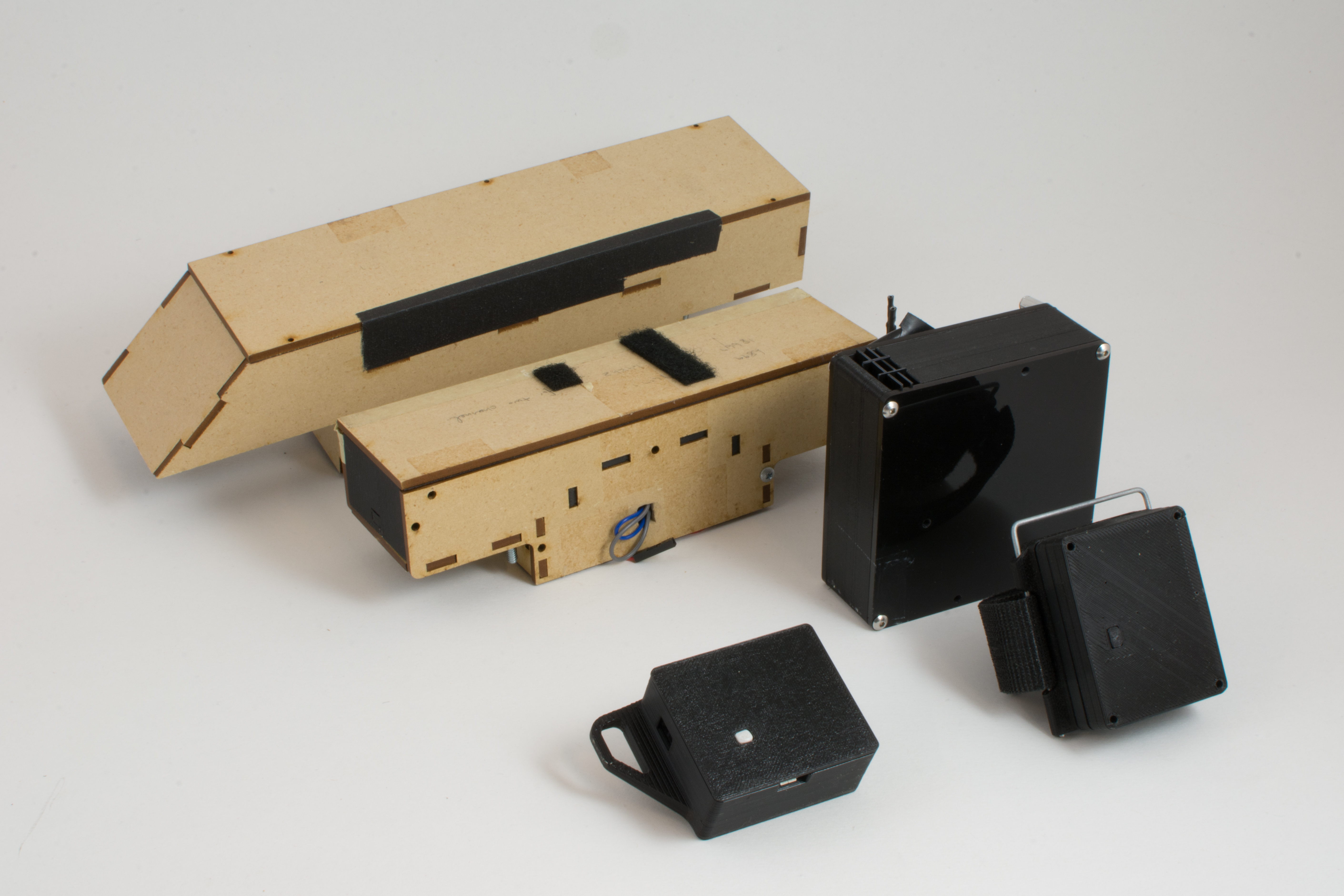One of the most harmful airborne pollutants with respect to human health is particulate matter. Airborne particles with a diameter of less than 10 microns (PM10) pose an especially large risk to human health: they can travel deeply into the respiratory system, causing a variety of cardiovascular and respiratory diseases.
Combustion (e.g. burning wood; automobiles) can generate particles less than 2.5 microns in diameter (PM2.5). Between 2.5 and 10 microns are particles such as dust, pollen, and mold. (More information about particulate matter can be found here).
While there are many devices currently available on the market that attempt to measure particulate matter, we wanted to make something that is simultaneously accurate, small, portable, low cost, and open source.
In addition to the design files and software for the sensor itself, this repository also contains the design files and software for a simple test chamber to run automated tests, as well for as a cost effective way to generate particles of known sizes. These are especially important for characterizing and calibrating the sensors that we buid.
For information about the tests that we ran, design rationale of the air flow chamber, and potential improvements that can be made on the device, please see the wiki.
Instructions for building a MyPart sensor, test chamber, and mono-dispersed particle generator can be found here, here, and here.
This project is created by Rundong Tian, Sarah Sterman, Ethan Chiou, Chris Myers, and Eric Paulos, members of the Hybrid Ecologies Lab at UC Berkeley.
See the LICENSE file for license rights and limitations (MIT).



